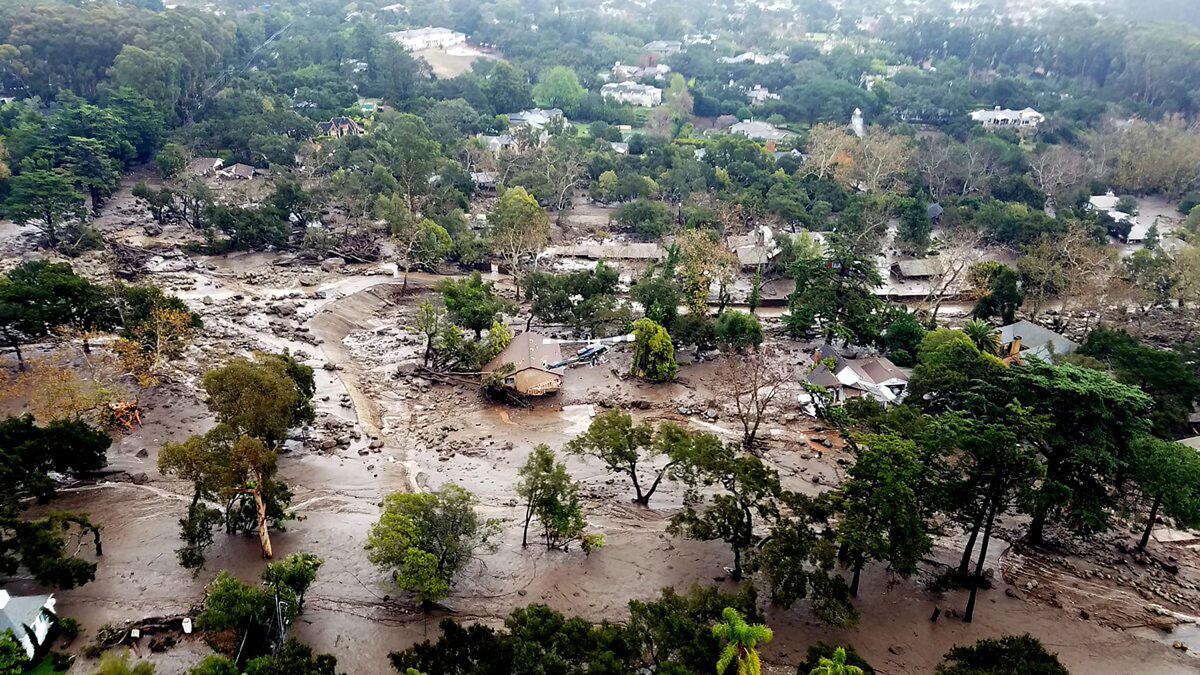Opinion: After the Los Angeles fires stop burning, another grave risk to lives and property looms

- Share via
The unprecedented firestorm that has devastated so much of Southern California will eventually wind down, possibly with the help of much-needed rain. But emergency and public works personnel may not have much time to rest: Any rain that follows the fires will bring a heightened risk of mudslides and debris flows that will test the limits of the region’s infrastructure.
Wildfires strip mountain slopes of vegetation while their extreme heat bakes surface soils. Even modest amounts of rainfall on such altered landscapes can trigger significant runoff that moves downhill quickly, eroding and gathering soil and debris into a fast-moving mixture.
Depending on how much sediment, rock and wood is incorporated, these phenomena are known as mudslides or debris flows. They are extremely dangerous to both property and people, and the risk can persist for several years, until vegetation grows back and soils recover.
Marking and honoring what has been lost in the fires will help rebuild L.A.’s soft infrastructure, the network of social ties holding communities together.
After a series of deadly and damaging post-fire floods in the 1930s, Southern California invested heavily in infrastructure to contain such flows, specifically large dams and smaller debris basins designed to trap mud and debris hazards before they reach the more populated areas at the base of mountains. More than 150 debris basins have been constructed across Southern California, where they serve as the first line of defense for communities below the Santa Monica and San Gabriel mountains, where the Palisades and Eaton fires have burned.
But this infrastructure does not provide absolute protection. The smaller debris basins are prone to overtopping.
Rainfall following another winter blaze, the Thomas fire — which started in December 2017 in the Santa Ynez Mountains above Ventura and Santa Barbara counties — created some of California’s deadliest floods in a century. Debris flows made up of water, mud, boulders, brush and trees emerged from the canyons of the Santa Ynez Mountains, overtopped debris basins and traveled several miles, destroying parts of the town of Montecito and blocking Highway 101. The flood killed 23 people and destroyed 400 buildings.
Letters and photos, diaries and documents stashed in bankers boxes or file cabinets or kitchen drawers turned to ash in the Palisades and Eaton fires.
Maintaining debris basins — specifically, clearing out accumulated sediment so they have enough capacity for the next storm — is critically important to avoid such tragedies. Cleaning debris basins between storms is especially difficult and costly due to soil saturation, but it may be particularly crucial. Recent research at UC Irvine has shown that debris basins may overtop because of the cumulative effect of back-to-back storms.
We were pleased to see Gov. Gavin Newsom’s executive order calling on government agencies to prepare for mudslide and debris flow risks. Clearing debris from burn zones will help minimize the volume of material that could contribute to debris flows, and cleaning debris basins and flood channels will help maximize these structures’ capacity to protect communities. But policymakers also must provide the funding necessary to clean flood control infrastructure repeatedly throughout the year, quickly update flood hazard maps to accurately reflect burn severity across watersheds, communicate risks to nearby residents and businesses, and prepare for prompt evacuations if and when they’re deemed necessary.
Climate change is intensifying California’s cycles of fire and flood, putting more people at risk and exerting greater pressure on infrastructure that was designed for a different climate and a much smaller population. Just as the danger of wildfires has grown, the risk of post-fire mudslides and debris flows is urgent and profound. It calls for immediate preparations and public cooperation to save lives and protect neighborhoods.
Jeffrey Mount is a senior fellow at the Public Policy Institute of California’s Water Policy Center. Brett Sanders is a professor of civil and environmental engineering, urban planning and public policy at UC Irvine.
More to Read
A cure for the common opinion
Get thought-provoking perspectives with our weekly newsletter.
You may occasionally receive promotional content from the Los Angeles Times.












